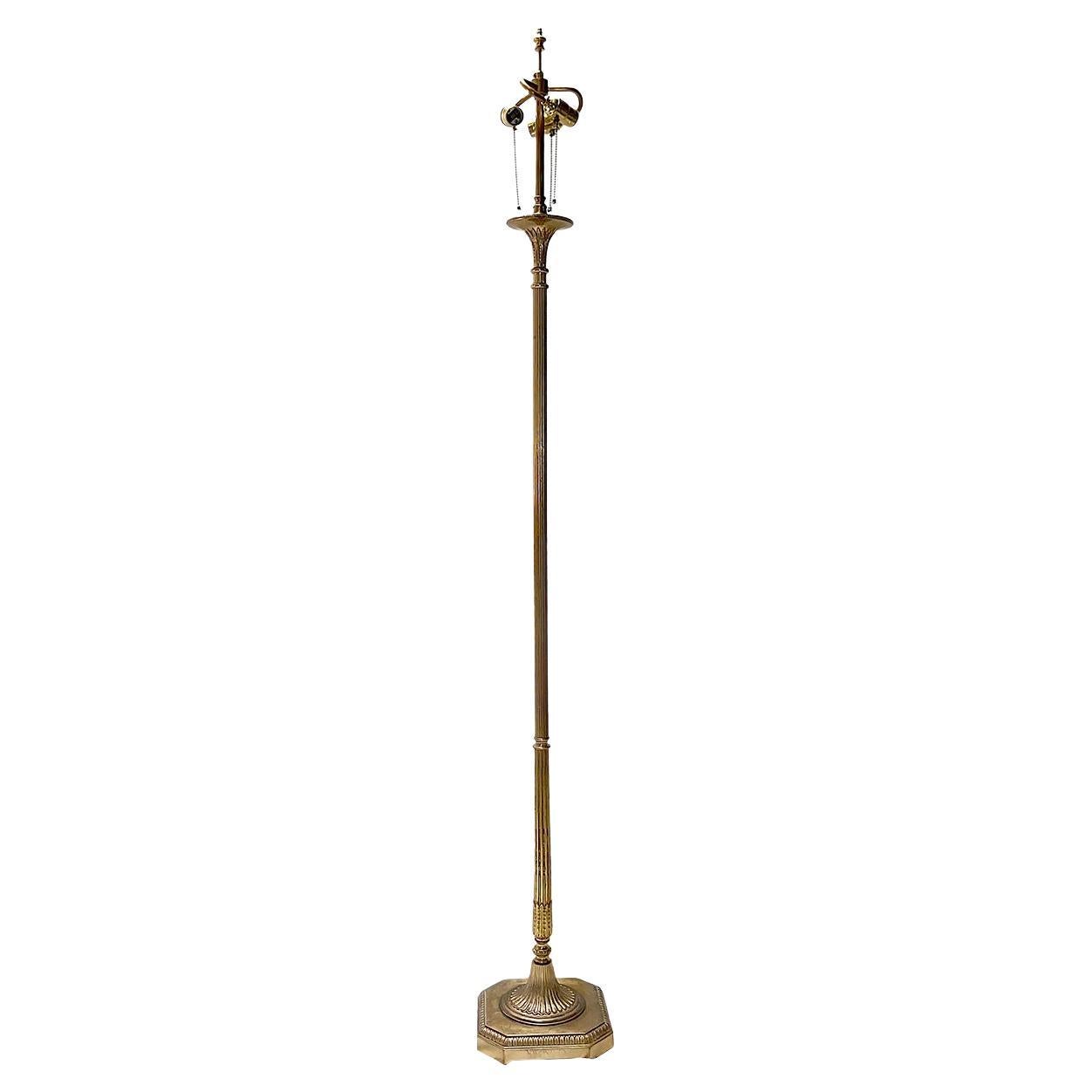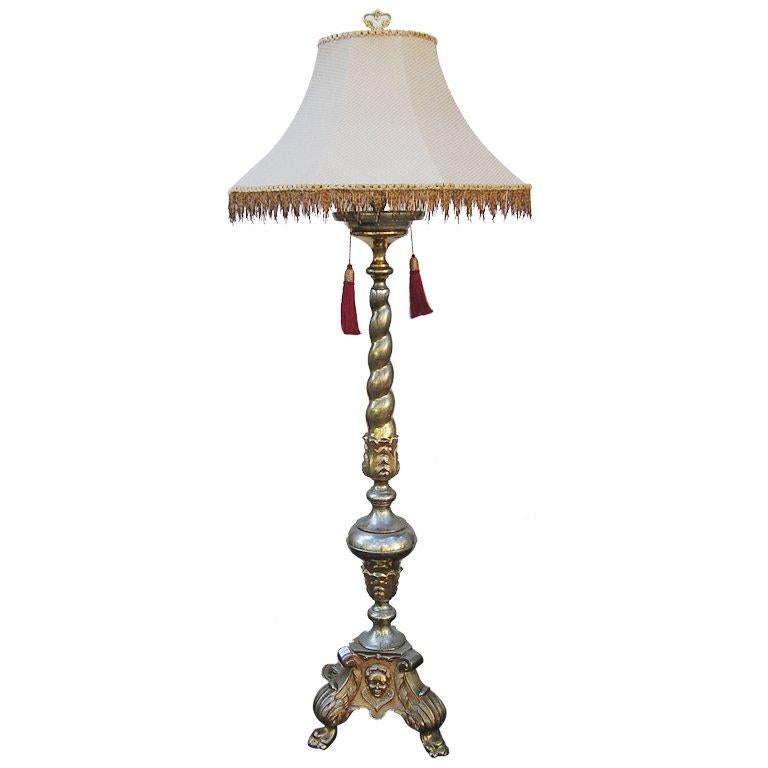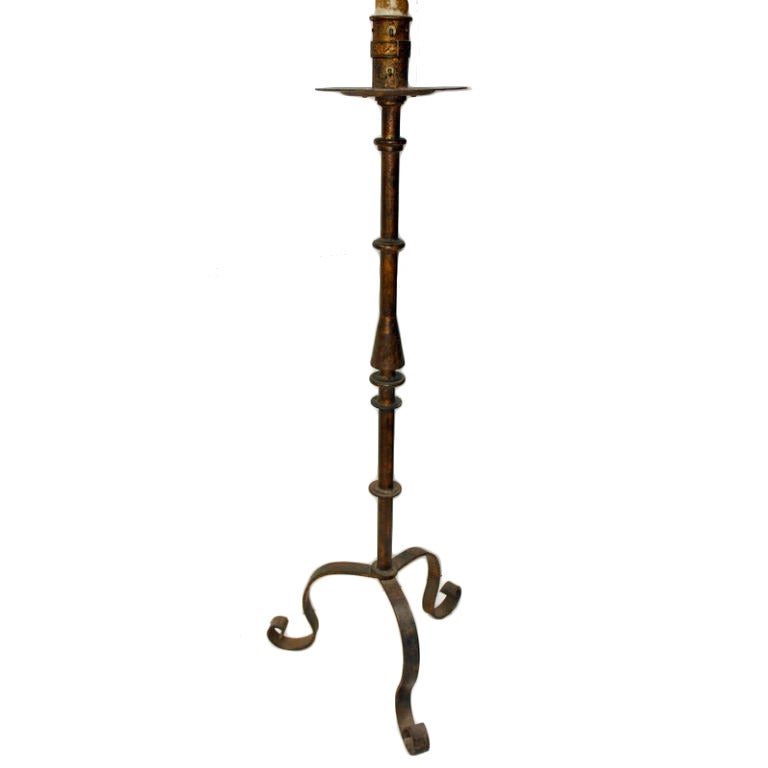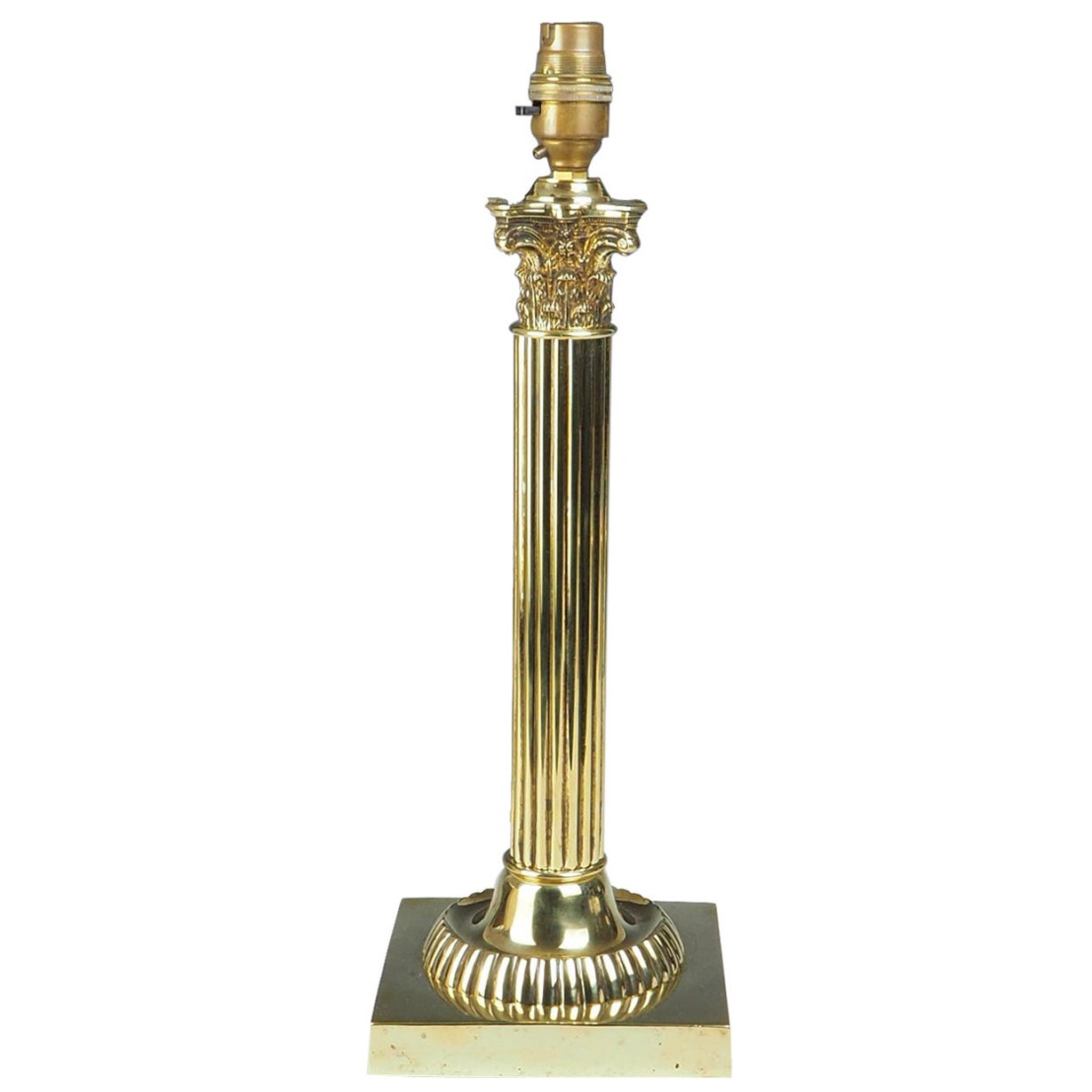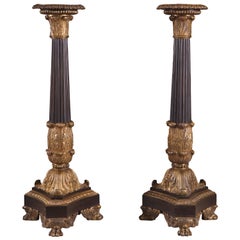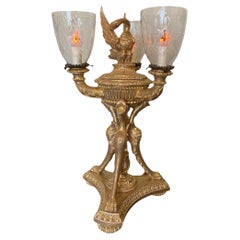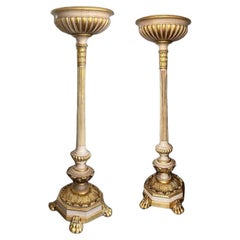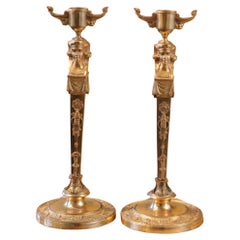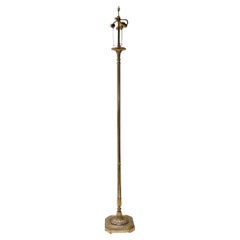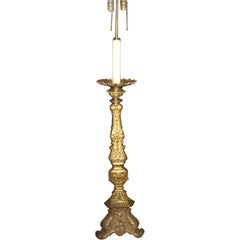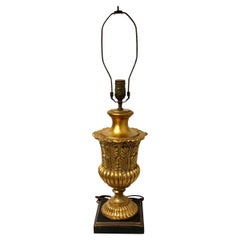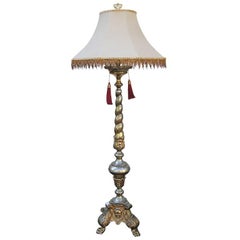Items Similar to An elegant single gilt bronze torchère
Want more images or videos?
Request additional images or videos from the seller
1 of 7
An elegant single gilt bronze torchère
$17,092.36
£12,350
€14,603.92
CA$23,395.68
A$26,204.40
CHF 13,635.02
MX$318,250.58
NOK 172,857.40
SEK 163,103.83
DKK 108,966.01
Shipping
Retrieving quote...The 1stDibs Promise:
Authenticity Guarantee,
Money-Back Guarantee,
24-Hour Cancellation
About the Item
A single gilt bronze torchère, having a circular top edged with decorative mouldings above a capital decorated with lotus leaf motif, the elegant reeded column supported by a decorative acanthus scrolled panelled base on four hairy paw feet standing on a further platform base.
French: Second Empire, circa 1850
- Dimensions:Height: 63.39 in (161 cm)Diameter: 9.85 in (25 cm)
- Materials and Techniques:
- Period:
- Date of Manufacture:c 1850
- Condition:
- Seller Location:Reepham, GB
- Reference Number:1stDibs: LU6737240058422
About the Seller
5.0
Vetted Professional Seller
Every seller passes strict standards for authenticity and reliability
Established in 2014
1stDibs seller since 2022
10 sales on 1stDibs
Typical response time: 1 to 2 days
- ShippingRetrieving quote...Shipping from: Reepham, United Kingdom
- Return Policy
Authenticity Guarantee
In the unlikely event there’s an issue with an item’s authenticity, contact us within 1 year for a full refund. DetailsMoney-Back Guarantee
If your item is not as described, is damaged in transit, or does not arrive, contact us within 7 days for a full refund. Details24-Hour Cancellation
You have a 24-hour grace period in which to reconsider your purchase, with no questions asked.Vetted Professional Sellers
Our world-class sellers must adhere to strict standards for service and quality, maintaining the integrity of our listings.Price-Match Guarantee
If you find that a seller listed the same item for a lower price elsewhere, we’ll match it.Trusted Global Delivery
Our best-in-class carrier network provides specialized shipping options worldwide, including custom delivery.More From This Seller
View AllA pair of gilt bronze empire column 19th C table lamps
Located in Reepham, GB
A fine pair of large-scale 19th Century table lamps in bronze and gilt bronze, finely chased details throughout.
Category
Antique 19th Century Table Lamps
Materials
Bronze
An extremely decorative giltwood three light table lamp
Located in Reepham, GB
An extremely decorative Italian 19th-century giltwood three-light table lamp featuring a central swan surrounded by three giltwood candle arms with glass shades.
The swan is mounted...
Category
Antique 19th Century Italian Table Lamps
Materials
Giltwood
An impressive pair of gilt and painted uplighters
Located in Reepham, GB
An impressive matching pair of 20th Century gilt and painted floor standing uplighters.
The pair of lamps feature a solid heavy set base with four paw feet with acanthus carving det...
Category
20th Century Floor Lamps
Materials
Wood
Pair of Neo Egyptian Empire Gilt Bronze Candlesticks
Located in Reepham, GB
Empire gilt bronze candlesticks.
A fine pair of gilt bronze candlesticks as standing female Egyptian caryatid figures surmounted with gilt bronze handled nozzles with lion masks, th...
Category
Antique 19th Century Candlesticks
Materials
Bronze
A pair of simulated porphyry table lamps in the shape of urns
Located in Reepham, GB
A classical pair of 20th century rich red simulated porphyry table lamps. Each modeling an elegant spiralized fluted urn shape.
Porphyry is a rare hard, purple-red stone that was h...
Category
20th Century Table Lamps
Materials
Resin
Monumental Gilt Corbel, Carved in the Regency Manner
Located in Reepham, GB
A corbel or wall bracket of monumental proportions, finely carved in the Regency manner, carefully gilded with a contrasting black platform.
Category
Early 20th Century European Victorian Wall Brackets
Materials
Giltwood
You May Also Like
French Gilt Bronze Neoclassic Floor Lamp
Located in New York, NY
A circa 1930's French gilt bronze floor lamp.
Measurements:
Height of body: 58″
Category
Vintage 1930s French Floor Lamps
Materials
Bronze
Bronze Candle Standing Lamp
Located in Water Mill, NY
Bronze tall candle made into lamp-wired. Measures: 63".
Category
Early 20th Century Italian Floor Lamps
Materials
Bronze
Gold Gilt Empire Style Lamp
Located in Tampa, FL
A single gold gilt lamp in the Empire style. It is very nicely gilded and at the bottom has company name. The lamp has the original plugs, socket and ha...
Category
Vintage 1940s Empire Table Lamps
Materials
Wood
French Gilt Bronze Floor Lamp
Located in Charleston, SC
French gilt bronze two light floor lamp with scrolled twisted shaft, connecting to lower floral bulbous urn, and terminating on tripod floral claw base with decorative figure. Deale...
Category
Antique 19th Century French Floor Lamps
Gilt Metal Floor Lamp
Located in New York, NY
A French gilt metal floor lamp with tripod base, circa 1920s
Measurements:
Height of body 60"
Diameter of base 18".
Category
Vintage 1920s French Floor Lamps
Materials
Iron
$4,200
19th Century Brass Corinthian Table Lamp
Located in Lincoln, GB
19th Century Brass Corinthian Table Lamp, a truly exquisite piece that effortlessly combines elegance and sophistication.
This lamp features a stunning scallop base, meticulously cr...
Category
Antique 19th Century British Table Lamps
Materials
Brass
More Ways To Browse
Column Gilt Bronze
Gold Gilt Columns
Hairy Feet Furniture
Hairy Paw
Empire Column Lamp
Bronze Column Capital
Mid Century Lotus Lamps
Gold Lotus Lamp
Antique Lotus Lamp
Bronze Lotus Leaf
Second Empire Lamp
Hairy Feet Empire Furniture
Middle Eastern Floor Lamp
Nakashima Floor Lamp
Nessen Chrome Floor Lamp
Noguchi Lamp Iron
Pierre Guariche G1
Plaster Torchiere Lamp
